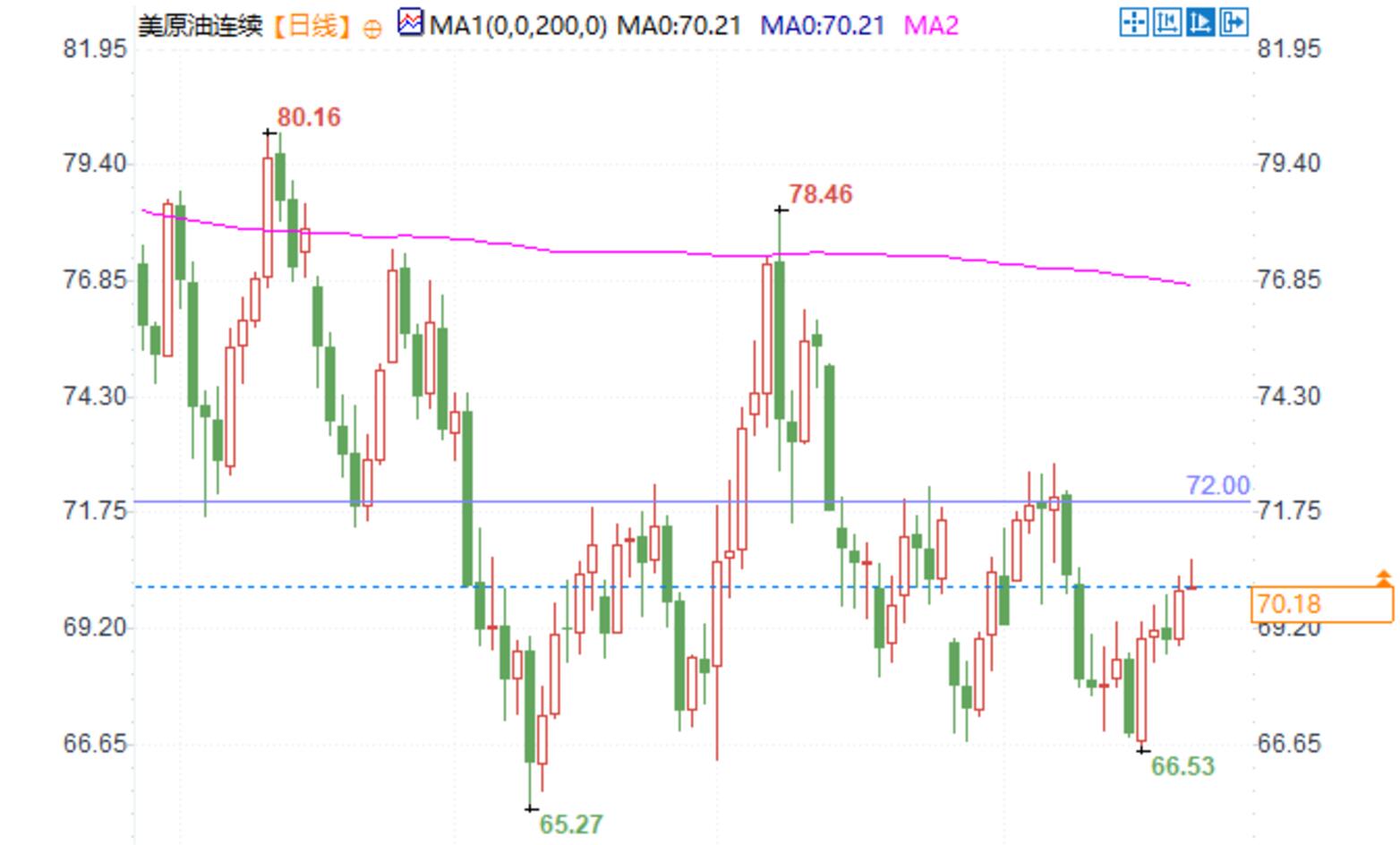Russia-Ukraine conflict escalated, and crude oil rose by more than 4% weekly! Will oil prices break through key obstacles?
The Brent crude oil continuous contract traded at $74.56 per barrel on Friday (November 22), up 0.41% for the day, while the WTI crude oil continuous contract was at $70.41 per barrel, up 0.46% for the day. The crude oil market has performed well this week, with two major contracts expected to record their largest weekly gains since the end of September, with a cumulative increase of over 4%. The main factor driving up oil prices is the further escalation of the Russia Ukraine situation, while the increase in geopolitical risks has also raised concerns about disruptions in crude oil supply. However, the increase in inventory and the expectation of oversupply have certain limitations on the upward trend.
Current market background
The intensification of the Russia-Ukraine conflict has become the core driver of the recent rise in oil prices. Russian President Putin warned on Thursday that the world may face broader conflicts, raising concerns in the market about the stability of crude oil supply. As an important global crude oil exporting country, Russia's production fluctuations have a significant impact on market sentiment. This month's data shows that despite pressure from import bans and production reduction agreements, Russia's daily crude oil production remains at around 9 million barrels.
At the same time, the weapons support provided by the United States and the United Kingdom to Ukraine has intensified Ukraine's attacks on Russia's critical infrastructure. For example, Ukraine has previously used drones to strike multiple Russian refining facilities, which could exacerbate market concerns about disruptions in the crude oil supply chain.
However, the continued growth of US crude oil inventories and market expectations of oversupply by 2025 still put pressure on the upward trend of oil prices. According to renowned institutional analysts, refinery activity in the United States may rebound next week, which could lead to further increases in production and inventory, exerting some pressure on oil prices.
Market Fundamental Analysis
1. The driving force of geopolitical risks
The continuous escalation of the Russia Ukraine situation has increased the risk premium in the crude oil market. Although the current crude oil supply has not been directly affected, this uncertainty supports prices.
2. US inventory and supply expectations
The latest data shows that US crude oil and gasoline inventories are on the rise. The market expects that inventory may continue to increase next week, and the rebound in refinery capacity utilization may also lead to short-term supply-demand imbalances. This has imposed certain restrictions on the rise of oil prices, but has not completely reversed the overall optimistic sentiment in the market.
3. The regulatory ability of OPEC+and shale oil
According to analysts from Goldman Sachs, the current Brent crude oil price may fluctuate between $70-85, with high reserve capacity limiting the upward potential of the price, while the elasticity of OPEC+and shale oil supply supports the downward trend of the price. However, analysts warn that if the United States strengthens sanctions against Iran, resulting in a decrease of 1 million barrels in Iran's daily production, Brent crude oil prices may rise to $85 per barrel in the first half of 2025.
Technical observation
From a technical perspective, Brent crude oil and WTI crude oil are approaching key resistance levels after consecutive increases. If they can break through the current level, they may further challenge the integer thresholds of $75 and $72. However, if geopolitical risks ease or inventory data exceeds expectations, oil prices may face short-term downward pressure.


Future Trends and Prospects
In the short term, geopolitical factors will continue to dominate the trend of the crude oil market. Any escalation of the Russia Ukraine situation could exacerbate market concerns about supply chain disruptions, providing support for oil prices. Meanwhile, US inventory data and global economic data will provide additional guidance for the market, especially PMI data from major economies around the world, which may provide clues for the demand side outlook.
Overall, crude oil prices are still likely to remain strongly volatile at current levels in the near future, but further upward momentum may be limited due to expectations of inventory and oversupply. Traders need to closely monitor the development of the Russia Ukraine situation and next week's US inventory data to assess future market trends.
Tips:This page came from Internet, which is not standing for FXCUE opinions of this website.
Statement:Contact us if the content violates the law or your rights
